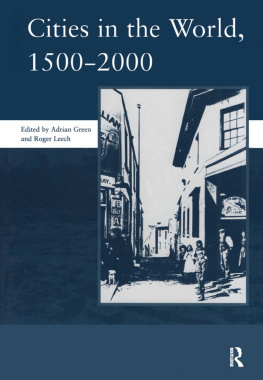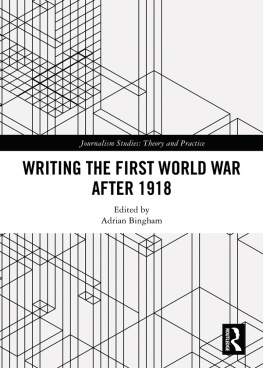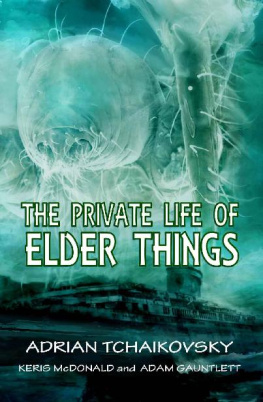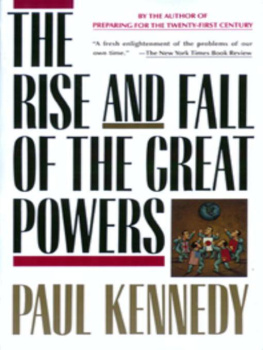THE SOCIETY FOR POST-MEDIEVAL ARCHAEOLOGY MONOGRAPH 3
Series Editor
DAVID BARKER
CITIES IN THE WORLD,
15002000
CITIES IN THE WORLD,
15002000
Edited by
ADRIAN GREEN and ROGER LEECH
Papers given at the Conference of the Society for Post-Medieval Archaeology, April 2002
Society for Post-Medieval Archaeology
First published 2006 by Maney Publishing Ltd
Published 2017 by Routledge
2 Park Square, Milton Park, Abingdon, Oxon OX14 4RN
711 Third Avenue, New York, NY 10017, USA
Routledge is an imprint of the Taylor & Francis Group, an informa business
2006, Authors and The Society for Post-Medieval Archaeology
ISSN 17404924
All rights reserved. No part of this book may be reprinted or reproduced or utilised in any form or by any electronic, mechanical, or other means, now known or hereafter invented, including photocopying and recording, or in any information storage or retrieval system, without permission in writing from the publishers.
Product or corporate names may be trademarks or registered trademarks, and are used only for identification and explanation without intent to infringe.
FRONT COVER
Sydneys Rocks neighbourhood, archaeology and reality.
Background: The excavation of the Cumberland/Gloucester Street site, view to east (Photograph by Patrick Grant 1994, reproduced by permission of Godden Mackay Logan, Sydney).
Inset: A view of Cumberland Place, formerly Cribbs Lane, off Cumberland Street in 1901 (State Records of New South Wales, Government Printing Office Collection, COD 121, reproduced by permission of the State Records of New South Wales).
ISBN 13: 978-1-904350-02-6 (hbk)
CONTENTS
By ADRIAN GREEN
By MARK HORTON
By INNOCENT PIKIRAYI
By GEORGE OWUSU
By AUDREY HORNING
By R. GRANT GILMORE III
By PETER BORSAY
By PETER GUILLERY
By PAUL BELFORD
By ROBINA MCNEIL
By PAUL COURTNEY
By DAVID PETTS
By HAROLD MYTUM
By JAMES SYMONDS
By MARY C. BEAUDRY
By GRACE KARSKENS
By REBECCA YAMIN
By ROGER LEECH
By SUSAN LAWRENCE
By ROGER LEECH
This volume is the third in the Society for Post-Medieval Archaeologys monograph series, and follows on from The Archaeology of Reformation 14801580 (edited by David Gaimster and Roberta Gilchrist) and The Archaeology of Industrialization (edited by David Barker and David Cranstone). It presents the proceedings from the Societys Cities in the World, 15002000 conference, held at Southampton University in April 2002.
This conference again brought together the many diverse interests that characterise the Society for Post-Medieval Archaeology. Archaeology, history, and architecture are all represented within the many distinguished papers contained within this volume. The Society is grateful to the organisers, Roger Leech and Adrian Green, for their hard work and energy in successfully taking the conference through the many stages from the first call for papers to this finished volume.
DAVID GAIMSTER
President, Society for Post-Medieval Archaeology
The Society is grateful to the British Academy and English Heritage for grants towards the cost of the conference. The University of Southampton, Department of Archaeology, is warmly thanked for hosting the conference. Associated British Ports provided a splendid reception on Southampton Harbour. For their role in leading field visits around Southampton and Portsmouth, we are extremely grateful for the knowledge shared by Andy Russell, Archaeology Unit Manager for Southampton City Council, and Jenny Stevens, Curator in Archaeology for Portsmouth City Museum. The organisation of the conference was much enhanced by the level-headedness of Mark Nokkert, assistant conference organiser. Members of the Council of the Society for Post-Medieval Archaeology also provided advice and assistance. Geoff Egan, Audrey Horning and Harold Mytum are thanked for their professional chairing of sessions. Finally, we are grateful to everyone who attended the conference. They made it a success, despite the sometimes gruelling load of information. We are also grateful to the contributors to the volume for their patience, to Linda Fisher and Pamela Leech for much hard work with the editing of the papers, and to David Barker and David Gaimster for their assistance in seeing it through to publication.
ADRIAN GREEN & ROGER LEECH
By ADRIAN GREEN
Out of an experience of the cities came an experience of the future.
Raymond Williams, The Country and the City (1973, 272)
The idea that cities are about the future not the past has been very powerful. Raymond Williams whose literary criticism ably explores the relationship of literature and society identified the idea that city experiences were an anticipation of the future in the imaginative literature of late 18th- and early 19th-century Britain.1 At the same time, written histories of British towns became more orientated on what the past could say about the future.2 Ever since for cities across the world, turning away from the past has been regarded as symptomatic of indeed, necessary for modernity and success. Consequently, the past in modern cities is often regarded with ambivalence. Since most cities are imbued with a sense of history and everyone who has contact with cities must necessarily understand something of the urban past frequently investing its material reminders with fresh meanings this stress on ambivalence may seem counterintuitive. Yet, the ways in which cities have been discussed and represented, as well as physically altered over the last few hundred years, has often tended to suppress consciousness of the past in cities, especially its non-monumental aspects and those not signed as heritage. This marginalisation of the past is an intrinsic strand of modern urbanism, albeit in tension with impulses to preserve or celebrate selected aspects of the past invariably those which support national or local identity. It is the ambivalence which this tension gives rise to between the city as future and the inconstant relevance of the past that archaeology holds a powerful means to alleviate.
Cities present a crucial subject for an international historical archaeology which aims to explain the processes and experiences of cultural change over the last 500 years.3 As this volume seeks to show, archaeological approaches can contribute enormously to our understanding of urbanism, not only in specific places but as part of larger processes of cultural development and interaction. As the geographers have demonstrated, modern cities are not bounded places and cannot be studied from an ethnocentric perspective, but will only be understood in regional and international context with full recognition of their complexity and interconnections.4 The papers in this volume cover only some of the changes in urbanism over the last 500 years, but the variety of topics and approaches on offer serves to highlight the significance of commonalities and continuities both between places and over time. In ranging over the period 15002000 this volume highlights the fact that many aspects of modern urbanism have their antecedents in the early-modern era, and the world since 1800 can only be properly understood through attention to developments since the end of the 15th century. Throughout the studies collected here, archaeology is challenging received understandings of the city. In doing so we must invariably overcome ideas about the urban which arose as part of European reactions to industrial urbanism in the 19th century. We are only currently shaking off conceptions of the city and its role in civilisation which marked out the urban as rational and modernising and the rural as traditional. Archaeologists and historians are well placed to challenge accounts of the city and ambivalence towards the urban which arise from this way of thinking.








